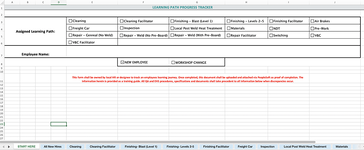I have a workbook with many sheets. I have an index worksheet that list the names of the worksheets in column B and a Yes/No question in column C. I am trying a VBA a code that when I type "Yes" it will open the worksheet that it corresponds to. When I type "No" it will hide the worksheet. The names in the list exactly match the name of the worksheets.
Range is from B1to C36
Range is from B1to C36







